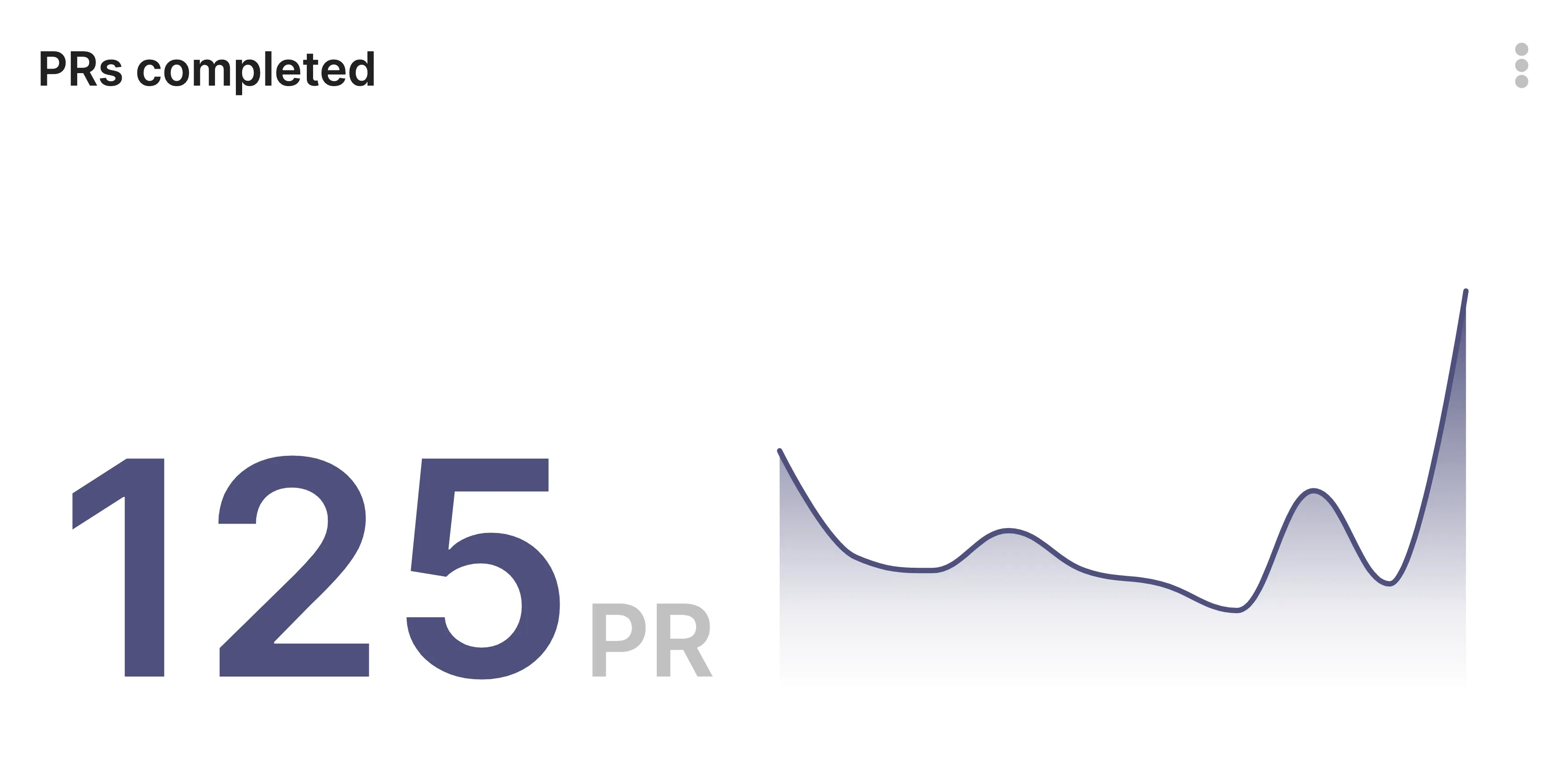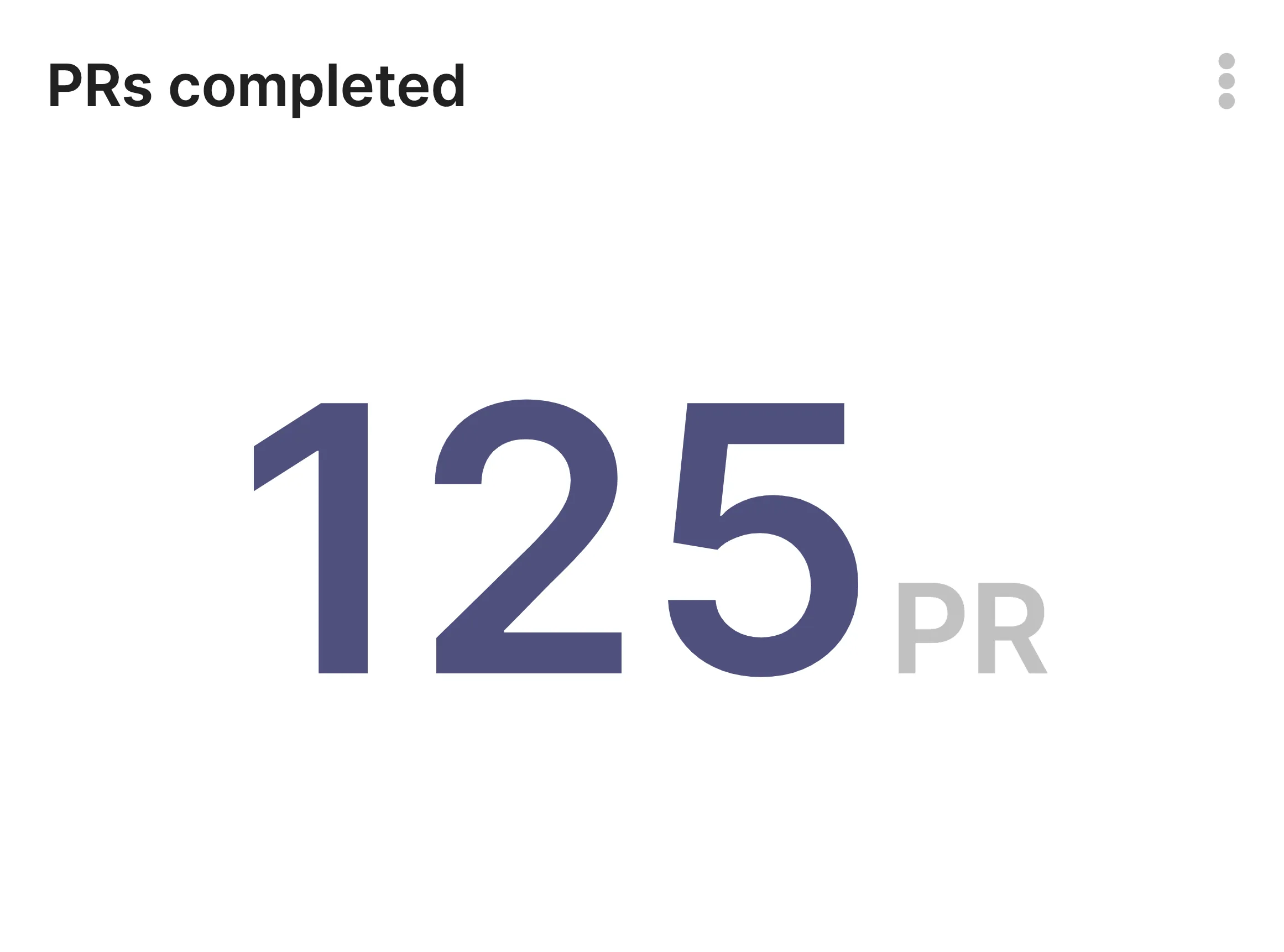Completed Pull Requests Metric
In the world of software development, understanding the rhythm and efficiency of your team's output is paramount. With our focused metric on counting completed (merged) pull requests, gain unparalleled insights into your development process, directly impacting your project's success. This vital statistic is a part of our comprehensive Activity Recap Dashboard, designed to empower tech leaders with actionable data.
Maximize Your Team's Productivity
with the
Completed Pull Requests Metric
In the world of software development, understanding the rhythm and efficiency of your team's output is paramount. With our focused metric on counting completed (merged) pull requests, gain unparalleled insights into your development process, directly impacting your project's success. This vital statistic is a part of our comprehensive Activity Recap Dashboard, designed to empower tech leaders with actionable data.



From startups to large enterprises, Keypup serves all the unique complexities related to project size, structure and teams, including:



.webp)
.webp)

.webp)








%20(1).webp)
.webp)




.webp)

.webp)

%20logo.webp)








.webp)




















.webp)








%20(1).webp)
.webp)




.webp)

.webp)

%20logo.webp)








.webp)



















Unlock the Power of Completed Pull Requests
Streamline Software Development Processes
- Accurate productivity measurement: Counting completed pull requests offers a quantifiable measure of your team's productivity, providing clarity on how effectively code moves from conception to integration.
- Identify trends and patterns: Discover the ebb and flow of your development cycle. A sudden drop or surge in completed PRs could unveil critical insights into workflow efficiencies or bottlenecks needing your attention.
Enhance Strategic Software Development Decision Making
Informed by Data, Driven by Results
- Adapt and improve strategies: Utilize the total PR done metric to fine-tune your development strategies, ensuring your team operates at its peak potential.
- Data-driven leadership: Equip yourself with solid data to lead confidently. Understanding your team's output empowers you to advocate for necessary resources, tools, or process adjustments.
Personal and Team Growth
From Individual Contribution to Team Success
- Personalized tracking: While this metric shines at the team level, individual contributors can also track their completed pull requests, aligning personal achievements with team goals.
- Foster a culture of excellence: Encouraging team members to monitor and increase their PR completion rates drives not just productivity but also a sense of accomplishment and team unity.
Why Focus on Completed Pull Requests?
- Simplicity and clarity: In the complex landscape of software engineering, the clear-cut metric of completed PRs cuts through the noise, offering straightforward insights into team performance.
- Benchmark for success: Whether you're looking to count completed pull requests, merged requests, or total PR done, this metric serves as a reliable benchmark for evaluating and enhancing your development workflow.
Elevate Your Development Workflow Today
Embrace the simplicity and clarity of measuring completed pull requests within your software development process. This focused approach not only streamlines workflow but also empowers you with data to make informed decisions, driving your projects toward efficiency and success. Leverage this metric and start transforming your development strategy today.
Track, analyze, and elevate your software development with precision. Focus on completed pull requests and witness your team's growth and success.







